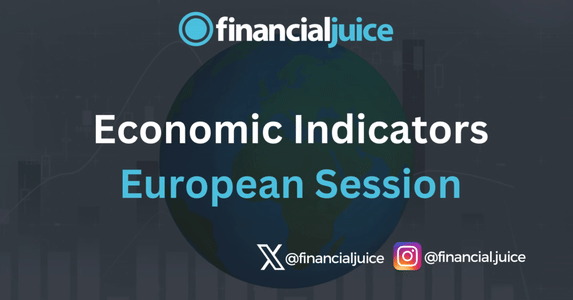
Week Ahead: Economic Indicators (EU)
Hey Traders!
For the February 26th week, here is a list of all of the major economic indicators being released during the EU Session, with a brief synopsis of what they represent and what to possibly expect from the markets in reaction.
Thursday February 29th
03:55 ET
German Unemployment Rate (February)
The unemployment rate is calculated by the Federal Employment Agency based on the number of unemployed persons as a percentage of the number of all civilian members of the labour force (dependant civilian employed persons, the self-employed family workers and unemployed). Unemployed is defined as persons between the ages of 15 and 65 and who are without employment or only with short-time employment (currently less than 15 hours per week) and seeking employment of at least 15 hours per week subject to compulsory insurance.
What to expect:
Unlike in the U.S. no wage data are included in this report. But by tracking the jobs data, investors can sense the degree of tightness in the job market. If labor markets are tight, investors will be alert to possible inflationary pressures that could exist. If wage inflation threatens, it’s a good bet that interest rates will rise; bond and stock prices will fall. No doubt that the only investors in a good mood will be the ones who watched the employment report and adjusted their portfolios to anticipate these events. In contrast, when job growth is slow or negative, then interest rates are likely to decline – boosting up bond and stock prices in the process.
German Unemployment Change (February)
The Unemployment Change released by the Bundesagentur für Arbeit and published by the German Statistics Office is a measure of the absolute change in the number of unemployed people in Germany using seasonally adjusted data.
What to expect:
A rise in this indicator has negative implications for consumer spending, as there’s less people working and therefore diminishes economic growth in the country. Generally, a reading above expected is seen as negative (or bearish) for the EUR, while a low reading is seen as positive (or bullish).
08:00 ET
German HICP (February)
The Harmonized Index of Consumer Prices is an index of consumer prices calculated and published by Destatis, on the basis of a statistical methodology that has been harmonized across all EU member states. HICP is a measure of prices used by the Governing Council of the EU to define and assess price stability in the euro area as a whole in quantitative terms.
What to expect:
By tracking inflation, whether high or low, rising or falling, investors can anticipate how different types of investments will perform. Over the long run, the bond market will rally (fall) when increases in the CPI are small (large). The equity market rallies with the bond market because low inflation promises low interest rates and is good for profits.
Friday March 1st
03:55–04:30 ET
Euro-Area and UK Manufacturing PMI’s (February)
The Manufacturing Purchasing Managers’ Index (PMI) measures the activity level of purchasing managers in the manufacturing sector. A reading above 50 indicates expansion in the sector; below 50 indicates contraction. Traders watch these surveys closely as purchasing managers usually have early access to data about their company’s performance, which can be a leading indicator of overall economic performance.
What to expect:
A higher than expected reading should be taken as positive/bullish for the GBP/EUR, while a lower than expected reading should be taken as negative/bearish for the GBP/EUR.
Barclays notes; “The manufacturing output PMI is well below 50 and fell further. This was driven particularly by Germany, which significantly underperformed in the December industrial production figures as well. This week’s German ifo survey confirms this, showing the manufacturing climate (ex-food & beverages) deteriorating. In all, manufacturing appears likely to continue to weigh on overall growth, driven by cyclical and structural factors such as loss of competitiveness due to higher relative energy prices and uncertainty about energy supply. For instance, production in German energy-intensive industries is well below even the levels reached during the lockdowns in spring 2020 and continues to decrease”.
05:00 ET
Eurozone Unemployment Rate (January)
The unemployment rate measures the number of unemployed as a percentage of the labor force.
What to expect:
Unemployment data is closely monitored by the financial markets. These data give a comprehensive report on the state of the economy and its future direction. A rising unemployment rate can be a warning sign of hard times, while a low rate can be a warning of inflation as wages are bid up to attract labor.
Eurozone CPI (February)
Inflation is an increase in the overall price of goods and services. The relationship between inflation and interest rates is the key to understanding how indicators such as the CPI influence the markets – and your investments.
What to expect:
By tracking inflation, whether high or low, rising or falling, investors can anticipate how different types of investments will perform. Over the long run, the bond market will rally (fall) when increases in the CPI are small (large). The equity market rallies with the bond market because low inflation promises low interest rates and is good for profits.
Barclays notes; “Slightly better growth data should also be accompanied by lower inflation. For example, this week’s final January HICP allowed us to identify the specific factors that pushed up services at the beginning of the year, and we believe these will not continue to boost momentum”.
“Eurozone flash CPI = key for ECB easing talk. The upcoming flash February numbers on March 1 should show Eurozone inflation, which soared to double-digits in 2022, moving back towards its 2% target. The reading slipped to 2.8% YoY in January from 2.9% in December and is cooling quickly with growth anemic and retreating energy prices,” according to BNYMellon.





